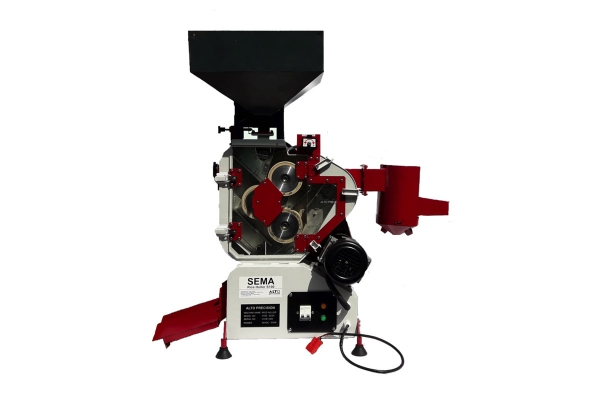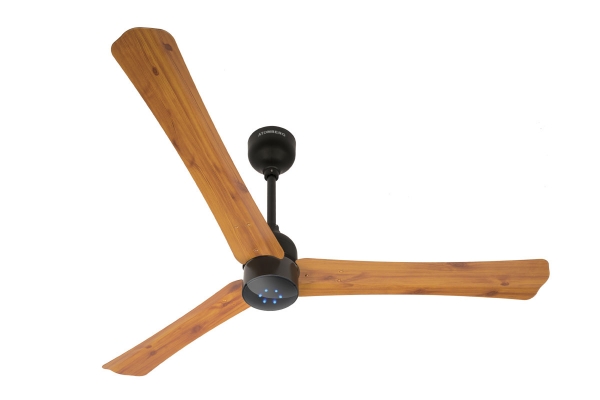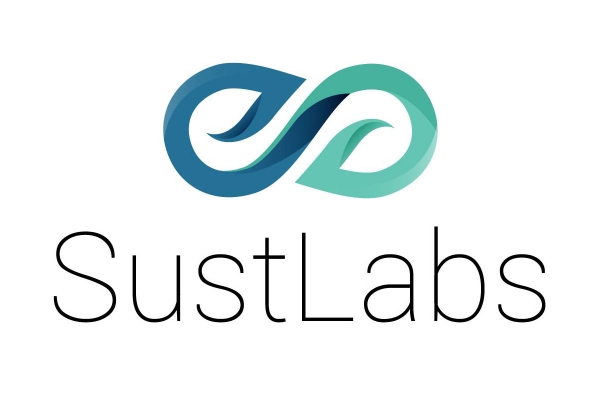Nominated innovations
1000 innovative clean energy solutions and > 150 framework enablers with the potential to deliver more than twelve gigatonnes of avoided emissions by 2030
These assessments are based on a basic avoided emission assessment. The overall concept of avoided emissions is that a solution (product or service) enables the same function to be performed with significantly less GHG emissions. The method of measuring avoided emissions, is to compare a baseline scenario without the enabling solution, with a scenario using the enabling solution; whereby the baseline represents the ‘business as usual’ (BAU) scenario.
These assessments are based on the framework document: The Avoided Emissions Framework (AEF) from September 2020

Energy generation forcasting
Suncast has developed a range of services for predicting and managing solar-based electricity generation. According to their website, the solution offer accurate models of energy generation by utilizing machine learning and artificial intelligence in combination with local weather data. This service is complemented by a monthly, e-mailed-based report that is sent to each customer, linking anomalies in the power generation to impactful parameters such as weather conditions over the relevant time period. Furthermore, the solutions includes an optimization model that indicates when it is the most profitable for each customer to clean their solar panels.
Chile
≈1

Suncast
Energy generation forcasting
Suncast has developed a range of services for predicting and managing solar-based electricity generation. According to their website, the solution offer accurate models of energy generation by utilizing machine learning and artificial intelligence in combination with local weather data. This service is complemented by a monthly, e-mailed-based report that is sent to each customer, linking anomalies in the power generation to impactful parameters such as weather conditions over the relevant time period. Furthermore, the solutions includes an optimization model that indicates when it is the most profitable for each customer to clean their solar panels.
≈1Mt CO2e/year

Solid-state refrigerator
India's National Physical Laboratory has developed a portable, solid state cooling technology that does not require the compressor or refrigerant found in conventional refrigerators. It can therefore be operated at a low-power supply of only 75 Watts DC, e.g. directly from solar photovoltaic cells and batteries. The purpose of the innovation is two-fold: first, as a low-cost comfort and food storage solution to rural populations, and second, to compliment India’s immunization program for rural populations of children by storing vaccines at low temperatures. With a long lifespan and needing little maintenance, the solid state cooler maintains 5 °C at an ambient temperature of 40 °C but can cool to -2 °C if required.
India
≈1

National Physical Laboratory New Delhi
Solid-state refrigerator
India's National Physical Laboratory has developed a portable, solid state cooling technology that does not require the compressor or refrigerant found in conventional refrigerators. It can therefore be operated at a low-power supply of only 75 Watts DC, e.g. directly from solar photovoltaic cells and batteries. The purpose of the innovation is two-fold: first, as a low-cost comfort and food storage solution to rural populations, and second, to compliment India’s immunization program for rural populations of children by storing vaccines at low temperatures. With a long lifespan and needing little maintenance, the solid state cooler maintains 5 °C at an ambient temperature of 40 °C but can cool to -2 °C if required.
≈1Mt CO2e/year

Solar powered small-scale agricultural machines
ALTO precision’s aim is to develop a range of solar-powered small-scale decentralised machinery for remote small holding agri-processing needs in India. Their current developments include a range of small-scale rice processing machines. The solar rice huller is a 360 W machine that can produce 100 kg/hour with a hulling efficiency of 98% in the first pass, which ALTO precision claims is the most efficient small-scale rice processing machine in the world, almost 50% more efficient than any other machine, at a low price. The machines are solar powered, high capacity and very efficient, giving farmers access to a sustainable energy source and providing food security and the opportunity to create an additional income.
India
≈1

ALTO Precision
Solar powered small-scale agricultural machines
ALTO precision’s aim is to develop a range of solar-powered small-scale decentralised machinery for remote small holding agri-processing needs in India. Their current developments include a range of small-scale rice processing machines. The solar rice huller is a 360 W machine that can produce 100 kg/hour with a hulling efficiency of 98% in the first pass, which ALTO precision claims is the most efficient small-scale rice processing machine in the world, almost 50% more efficient than any other machine, at a low price. The machines are solar powered, high capacity and very efficient, giving farmers access to a sustainable energy source and providing food security and the opportunity to create an additional income.
≈1Mt CO2e/year

Organic Rankine Cycle turbine
Low-temperature heat can be captured and converted into electricity through the Organic Rankine Cycle (ORC) system. Againity takes advantage of low-temperature heat down to 90 degrees and can perform with systems in the range of 50-2500 kW energy production. The modularity of the Againity solution means they can be combined and scaled. Automation steers the system but can also be remotely controlled. The intended market is for heat sources from water boilers, treatment plants, or industrial processes.
Sweden
≈1

Againity AB
Organic Rankine Cycle turbine
Low-temperature heat can be captured and converted into electricity through the Organic Rankine Cycle (ORC) system. Againity takes advantage of low-temperature heat down to 90 degrees and can perform with systems in the range of 50-2500 kW energy production. The modularity of the Againity solution means they can be combined and scaled. Automation steers the system but can also be remotely controlled. The intended market is for heat sources from water boilers, treatment plants, or industrial processes.
≈1Mt CO2e/year

Automatically created transport solutions for events
Existing transport infrastructure often reaches its capacity limits at events, for example, which is why alternative solutions are required at short notice. Triply offers a possibility to estimate the arrival routes of the visitors in advance and to provide alternative mobility solutions for the transport. Finding stops and routing are optimized by an underlying triply algorithm, which saves money and valuable time. Triply offers a possibility to clearly display the coverage of public transport systems and to visualize the effects of changes on the accessibility. The interactive map can be used as a basis for planning or for external communication.
Austria
≈1

Climathon Project Triply
Automatically created transport solutions for events
Existing transport infrastructure often reaches its capacity limits at events, for example, which is why alternative solutions are required at short notice. Triply offers a possibility to estimate the arrival routes of the visitors in advance and to provide alternative mobility solutions for the transport. Finding stops and routing are optimized by an underlying triply algorithm, which saves money and valuable time. Triply offers a possibility to clearly display the coverage of public transport systems and to visualize the effects of changes on the accessibility. The interactive map can be used as a basis for planning or for external communication.
≈1Mt CO2e/year

Grid-scale thermal storage using solid-state material
EnergyNest developed a thermal battery for thermal power plants and energy-intensive industries. The company recently installed and commissioned a pilot system with a combined capacity of 1 MWth. The company says that the system was operated over more than 6,000 hours with an energy cycling profile resembling operation in a power plant. In 2018, a first free-standing commercial module was manufactured and displayed at the company’s assembly site in Rotterdam. Since the technology’s two main materials – concrete and steel – are available and recyclable, it can be deployed in any geographical location, and up to 80% of the storage materials can be sourced locally.
Norway
≈10

EnergyNest AS
Grid-scale thermal storage using solid-state material
EnergyNest developed a thermal battery for thermal power plants and energy-intensive industries. The company recently installed and commissioned a pilot system with a combined capacity of 1 MWth. The company says that the system was operated over more than 6,000 hours with an energy cycling profile resembling operation in a power plant. In 2018, a first free-standing commercial module was manufactured and displayed at the company’s assembly site in Rotterdam. Since the technology’s two main materials – concrete and steel – are available and recyclable, it can be deployed in any geographical location, and up to 80% of the storage materials can be sourced locally.
≈10Mt CO2e/year

Energy efficient ceiling fan
Atomberg Technologies aims to use their innovative Gorilla Ceiling Fan to reduce power consumption of cooling compared to conventional fans. The company claims that, whereas other fans consume around 75 Watts at full speed, Gorilla fans consume only 28 Watts; achieved using a brushless DC motor design and a driving algorithm called “atomsense”, which precisely senses various motor parameters in real time and controls the motor in a closed loop, avoiding power losses.
India
≈10

Atomberg Technologies Private Limited
Energy efficient ceiling fan
Atomberg Technologies aims to use their innovative Gorilla Ceiling Fan to reduce power consumption of cooling compared to conventional fans. The company claims that, whereas other fans consume around 75 Watts at full speed, Gorilla fans consume only 28 Watts; achieved using a brushless DC motor design and a driving algorithm called “atomsense”, which precisely senses various motor parameters in real time and controls the motor in a closed loop, avoiding power losses.
≈10Mt CO2e/year

Pulp-based studs as building material
Wood Tube Sweden produces pulp-based studs for inside walls and furniture. The studs are similar to traditional wooden planks, but utilize a hollow design. It has a lower weight and price compared to alternatives and, due to the hollowness, its greather surface can be treated for improvement. The attributes can lower costs of construction while reducing environmental impact from heavy materials and newly-sourced timber.
Sweden
≈10

Wood Tube Sweden AB
Pulp-based studs as building material
Wood Tube Sweden produces pulp-based studs for inside walls and furniture. The studs are similar to traditional wooden planks, but utilize a hollow design. It has a lower weight and price compared to alternatives and, due to the hollowness, its greather surface can be treated for improvement. The attributes can lower costs of construction while reducing environmental impact from heavy materials and newly-sourced timber.
≈10Mt CO2e/year

Smart electricity meter data analysis
SustLabs uses automated metering and big-data analytics to ‘decode’ real-time electricity consumption data at residential level up to heavy appliance level by analysing smart meter data. This unlocks a wealth of information that electricity supply carries, generating insights for utilities, appliance manufacturers, market research companies, etc., which creates data driven revenue opportunities. SustLabs predicts this will transform compulsive electricity consumers to informed users.
India
≈10

SustLabs
Smart electricity meter data analysis
SustLabs uses automated metering and big-data analytics to ‘decode’ real-time electricity consumption data at residential level up to heavy appliance level by analysing smart meter data. This unlocks a wealth of information that electricity supply carries, generating insights for utilities, appliance manufacturers, market research companies, etc., which creates data driven revenue opportunities. SustLabs predicts this will transform compulsive electricity consumers to informed users.
≈10Mt CO2e/year

Perovskite solar cells
Perovskite solar cells are developed by the University of Warsaw and represent a new class of photovoltaic devices. Their efficiency has reached 24 percent within 8 years of development, which is comparable with silicon solar panels that hav been developed for decades. Estimates say that this generation of solar cells will be significantly cheaper than panels currently available on the market. This is due to low temperature fabrication processing, simple manufacturing and cheap components. Furthermore, there is a possibility to make flexible devices which opens a brand-new application of solar panels.
Poland
≈10

Student Energy Greenpreneur Adam Winukiewicz
Perovskite solar cells
Perovskite solar cells are developed by the University of Warsaw and represent a new class of photovoltaic devices. Their efficiency has reached 24 percent within 8 years of development, which is comparable with silicon solar panels that hav been developed for decades. Estimates say that this generation of solar cells will be significantly cheaper than panels currently available on the market. This is due to low temperature fabrication processing, simple manufacturing and cheap components. Furthermore, there is a possibility to make flexible devices which opens a brand-new application of solar panels.
≈10Mt CO2e/year